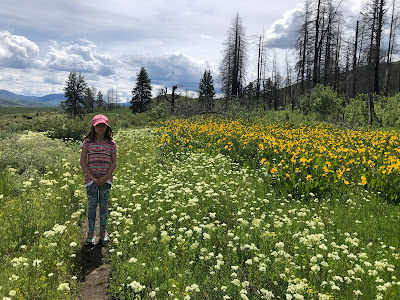If any women are to be present, and the interment is to be in the ground, someone should order the grave lined with boughs and green branches, to lessen the impression of bare earth."
From Etiquette, by Emily Post, 1922
Sooner or later, all living things return to earth. Become earth. Above is a special container designed to compost human remains.
That top layer of fresh alfalfa hay reminded me happy, fragrant horse barns. Not so different from green boughs lining a dark grave.
At Return Home, a composting funeral home, some people decorate the composting vessel with photographs, and then cover the deceased with plants or biodegradable keepsakes. Perhaps even a final bottle of Chardonnay, sans the bottle.
My hospice organization, Virginia Mason Franciscan, has monthly in-service sessions for volunteers on topics relating to (big surprise!) death. This month, they arranged a tour at Return Home in Auburn. There was extra space, so John also went.
Terramation is a green alternative to cremation that transforms the body into soil with much less energy and pollution. It takes about 2 months from start to finish. Washington was the first state to legalize terramation. It's received quite a bit of attention and who knows, might be the next thing in funerals. It certainly makes sense from an environmental standpoint.
Return Home CLICK HERE has a excellent website. They are transparent about their prices, process and services. You can also watch YouTube videos on technical aspects of human composting.
It's actually pretty simple: air, water, heat, organic materials, time. That's John checking out the ventilation machinery. Yes, this area of the industrial park smelled like nursery compost. No better, no worse.
These biodegradable, soft garments clothe the corpse before terramation. No Sunday best polyester suits and dresses here. No prior embalming, of course. All ages, diseases and causes of death, with the exception of Mad Cow or Ebola. Well, maybe that's too much information. Anyway, the final product is tested for safety-- heavy metals, bacteria, that sort of thing.
Family members often wash and prepare their loved ones in a small private room before a "laying in" ceremony. People have been doing this since the start of time, but the practice was lost with modern funeral conventions in our country. Everything is personalized at this professional but very casual funeral home.
Then the box lid is sealed and the transformation to soil begins. I wonder if this might be a gentler way to grieve than a quick cremation or burial?
There's nothing to see during the 60 day terramation process, but family and friends often visit the facility to pray, meditate, listen to music or even celebrate a life with food and drink.
The end result is about 600 pounds (1 cubic yard) of compost. It can be spread on a greenbelt, garden or used to plant a new tree. And sometimes, divided up and given to friends and family members at memorial services. The funeral director above is holding a small bag. However you feel about this personally, must admit it's very interesting.








































